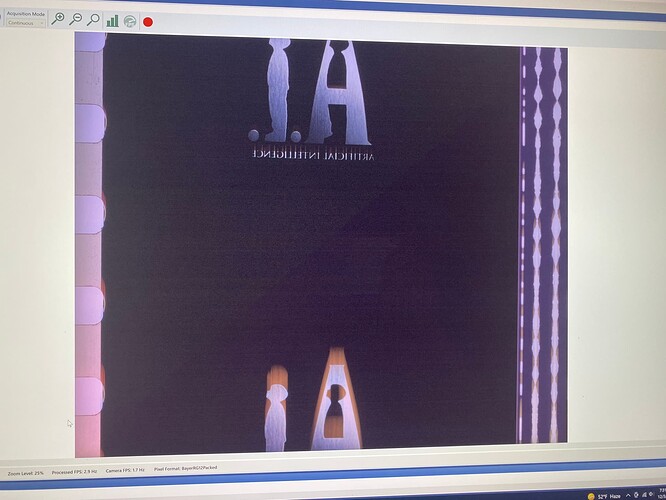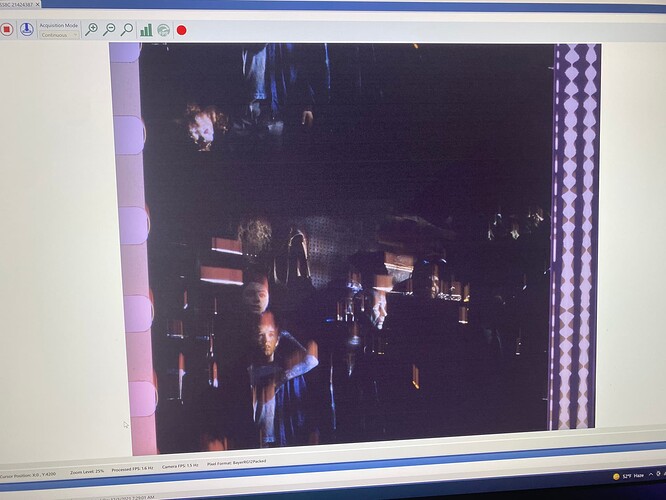I finally timed the camera trigger and did my first scan on the new machine. You can see my scanner thread here: RobinoScan RT 16/35 Scanner - #17 by robinojones
I scanned an old dirty trailer, it’s been on the scanner to test transport for months. This was scanned at approx 12fps, with 36us exposure times in Flir Spinview.
Using the FLIR ORYX 5.3K Model: ORX-10G-245S8C 24.6MP camera.
https://www.flir.com/products/oryx-10gige/?model=ORX-10G-245S8C
The scan is showing smearing/motion blur and I’m not sure why since my exposure times are very short.(36us) I don’t flash the LEDs, they are constantly on, could this be the issue? You can see smearing everywhere but especially on titles and high contrast/highlights areas. On the scan you will see, the smear direction is bottom > top, because on the scanner, the camera is tilted on its side and the film moves right to left (from the camera perspective) - so it makes sense that blur would be this way. But this much at 36us??
I have 12 days left to return the FLIR, I could get the emergent with same sensor for almost same price. Maybe the FLIR just doesn’t cut it for this job? It’s my first machine vision system, I don’t know how these camera are supposed to behave.
Please don’t judge the scan picture quality, the camera is literally sitting on an aluminum plate, not bolted, focus is totally guessed - Saved as JPEG sequence, I have no clue how to process FLIR .RAW files at the moment - I actually can’t believe it came out this good as my first test - except for the smearing. I stabilized the scan in Resolve, it was pretty stable for a temp 3D printed gate.
I also see a lot of stuck pixels (red, green, white) - but I’m sure they(FLIR) could map them out.
Let me know what you think about the smearing, is it because I’m not flashing the LEDs? Or maybe this camera needs to go back to its maker.
PS: Audio was extracted with AEOLIGHT - it’s nice to get a lot of headroom in a scan so you can easily extract audio like this.
https://vimeo.com/652767104
Password: rsrt


